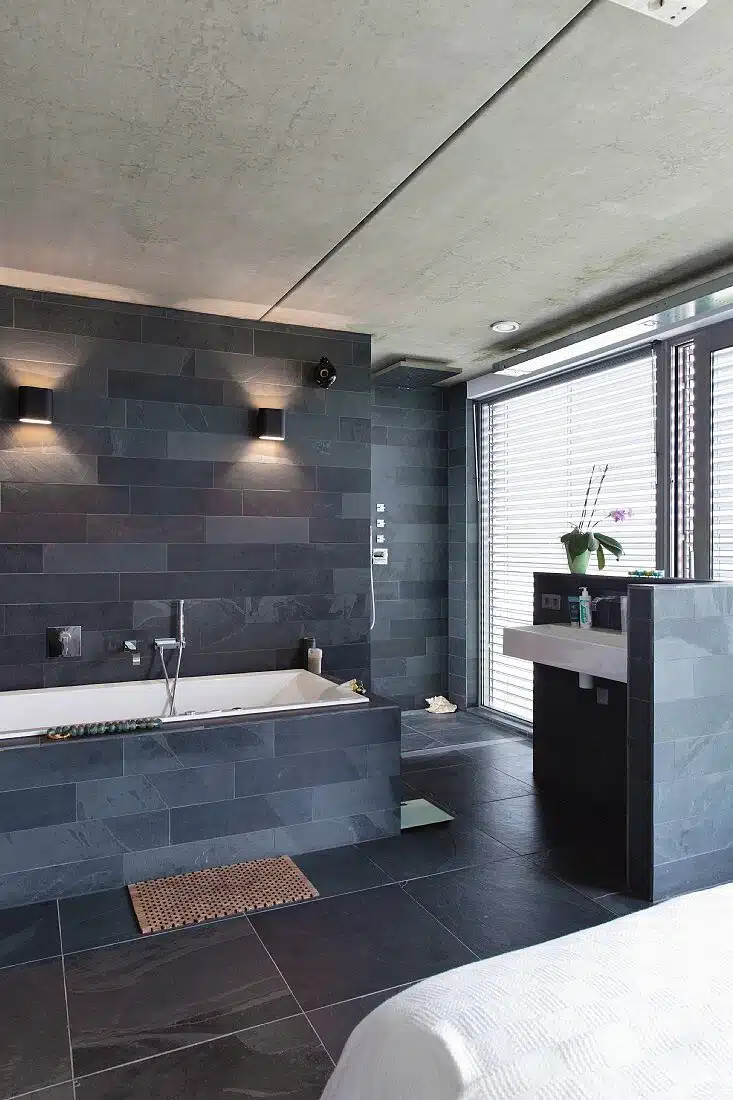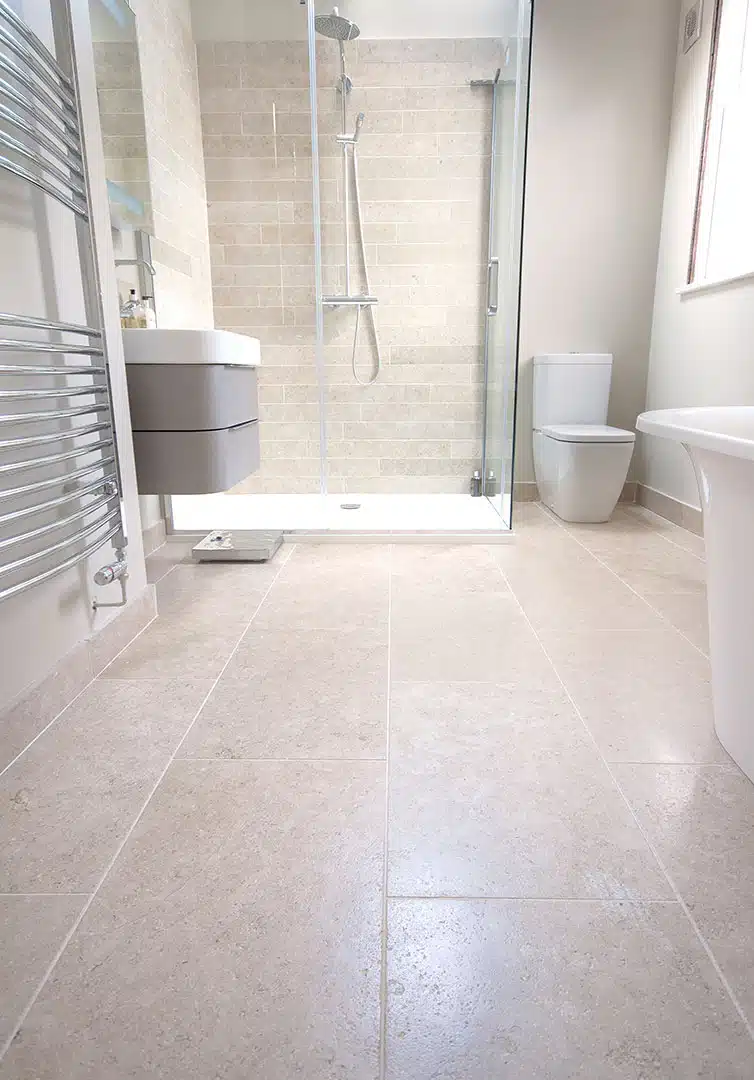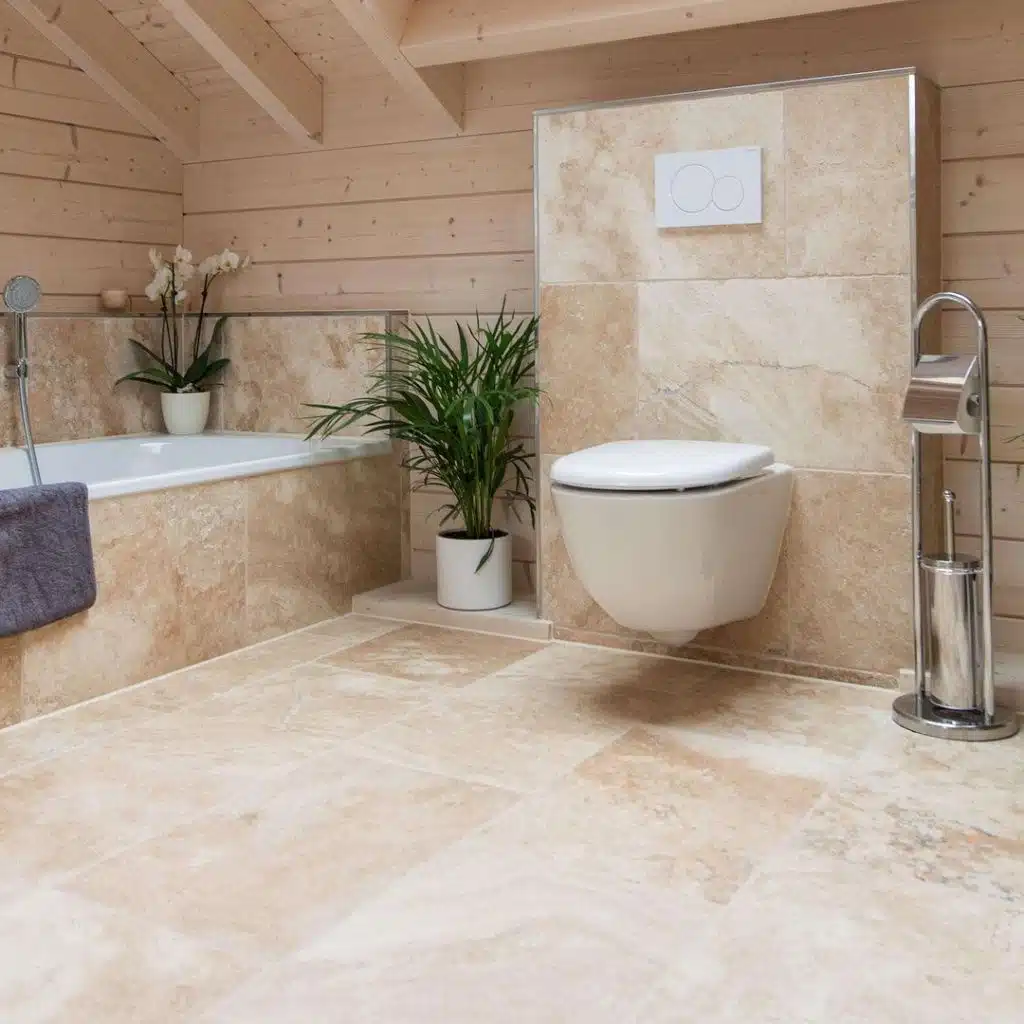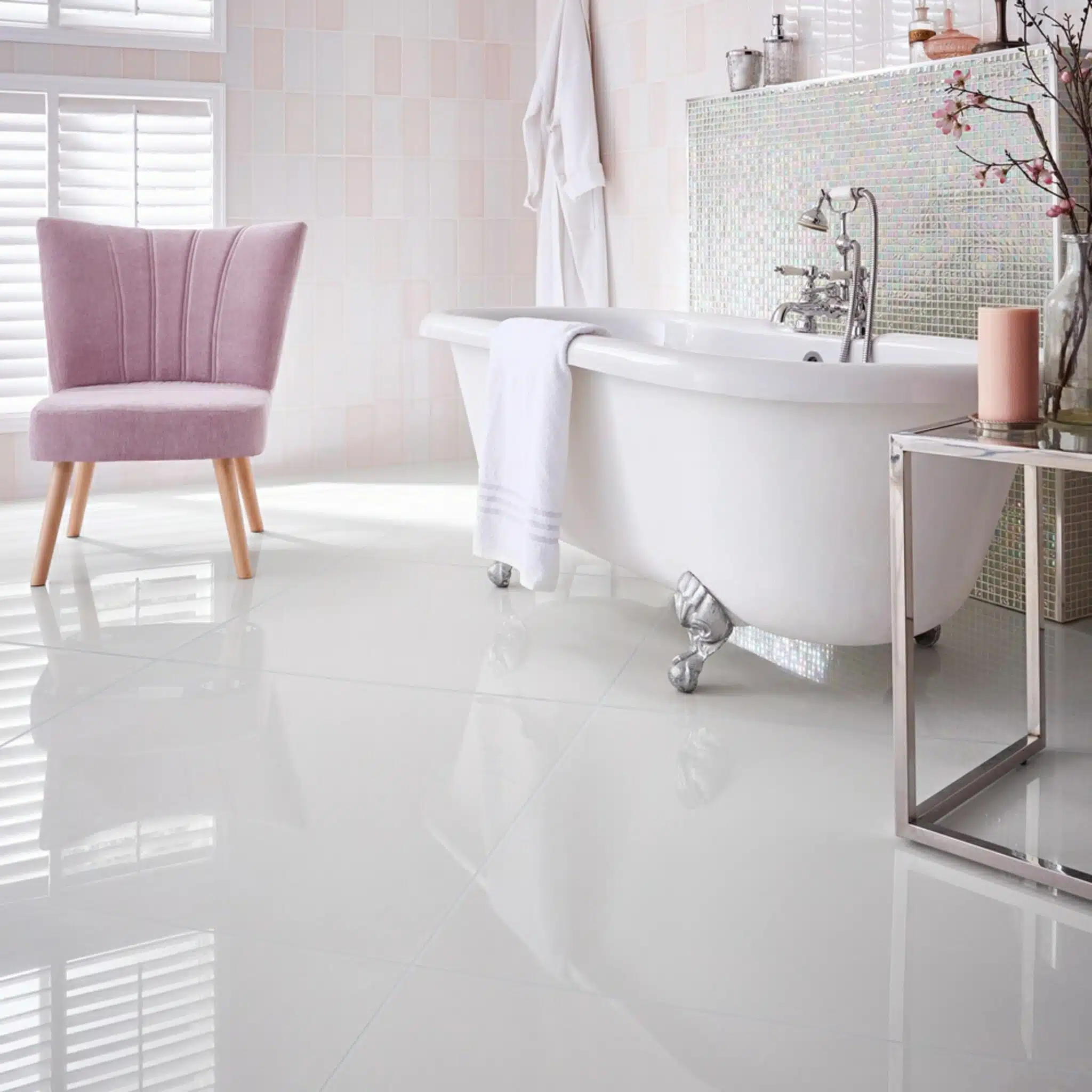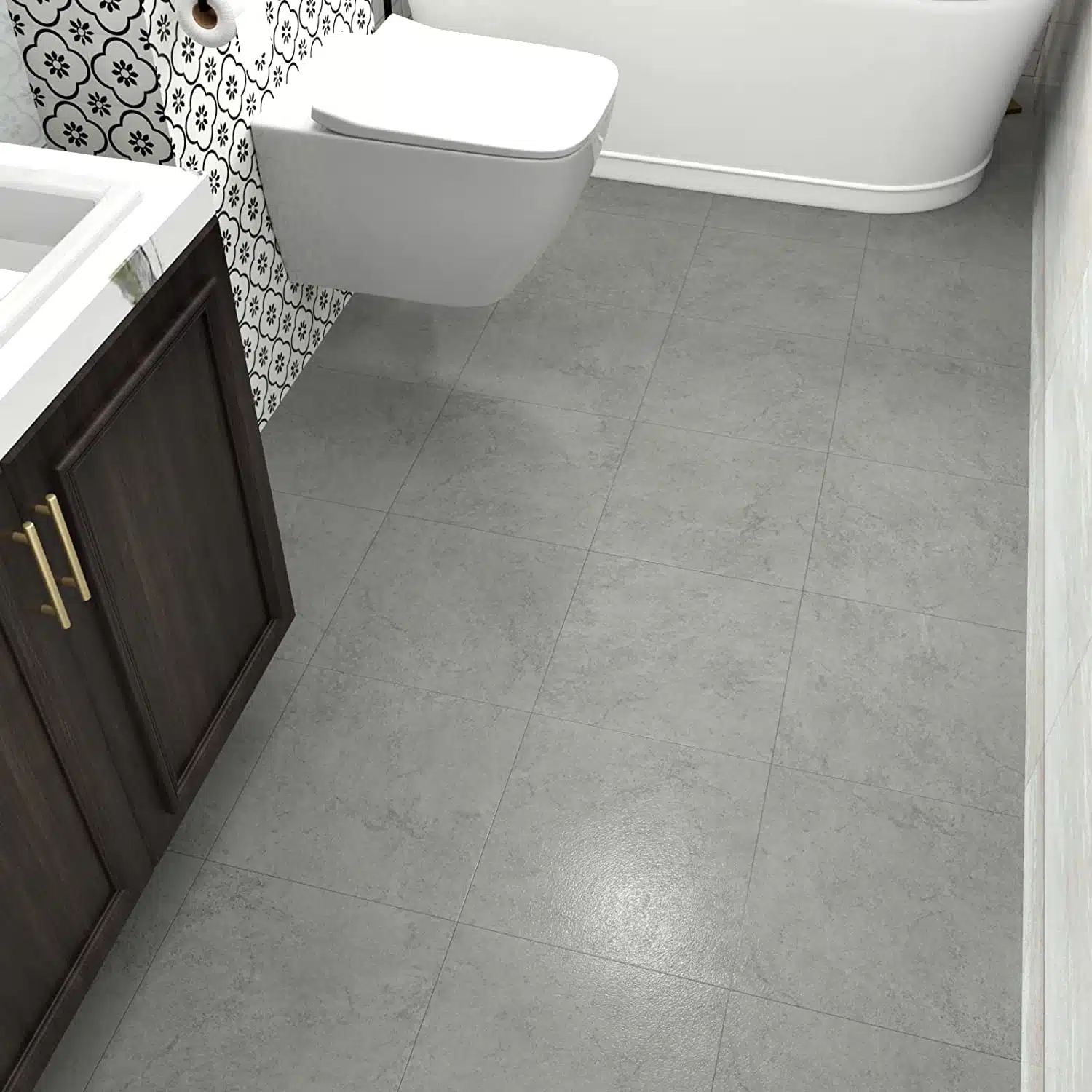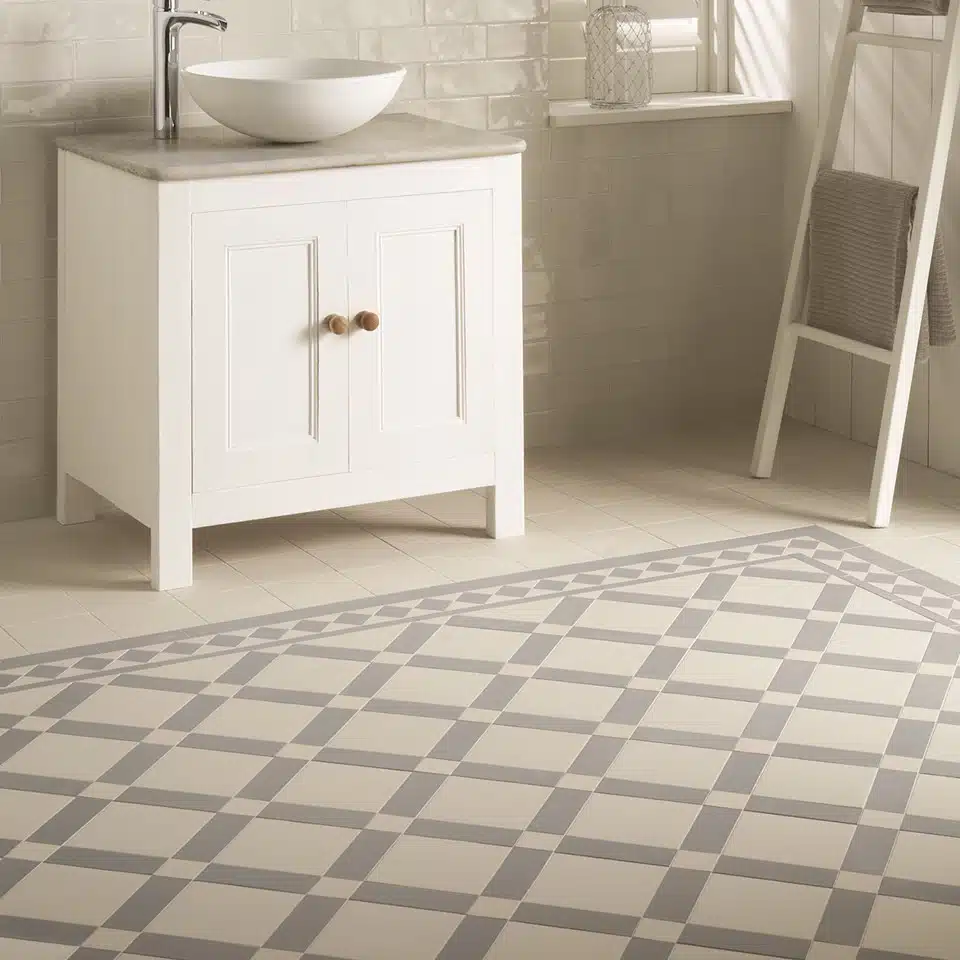What is best tiles for bathroom floor? One must keep in mind that the weariness of furniture and even tiles is very likely to happen no matter how posh a residence is. What are the right tiles for any floor, especially the bathroom when going for a change?
The best option for bathroom tiles is a natural stone, as it has firmness and texture to withstand moist conditions while giving an aesthetic finish. These include marble, slate, limestone, and travertine. However, these require high maintenance and sealing replacement over time.
It is no surprise that tiles shape the outlook of the place, and bathrooms, in particular, need all the detailing they can get to withstand the condensation, splashes, and increased humidity they must face. The right steps to ensure your money does not go to waste on the wrong tiles are mentioned below, read on!
Natural Stone Tiles
The most commonly available and reliable stones in the Natural category are listed below:
1. Marble

Marble sets a different tone all on its own with its pale colors and distinguished veins of pigment running through the stone. According to your taste and preference, a wide range of colors exist to choose from, be it striking bold shades to pastel hues.
The important thing to note here is that while marble tiles are bound to last for long periods, they can’t do so with polish on them when used for flooring. Ensure the tiles are tightly sealed from the edges, and avoid constant contact with water for long periods.
2. Slate
This firm-grip material is your go-to choice for flooring, especially for bathrooms for the elderly and those individuals who are prone to falls. The shades offered in this stone are usually in the darker range. Therefore, it’s best to use these tiles on the floor, coupled with a lighter shade for the walls.
3. Limestone
Known for its lavish touch, stylish appearance, and fine finish, Limestone is the ultimate stone for beauty. It should be noted, however, the softness of the material possesses. This makes it prone to wearing and should be sealed properly. The best way to use the stone is in bathrooms less frequently visited.
4. Travertine
Travertine tiles come mostly in soft, pale, warm colors. These have characteristic dips and patterns unique to the stone, however, strong chances exist of water entering these tiles. Its best, therefore, to use tiles that have been properly sealed to prevent damage. Once this is ensured, these tiles can well be used for walls as well as flooring.
Artificial (Man-made) Tiles
Work has been done to replicate the natural tiles using commonly available materials. The products of such works have shown great success and are popularly used, the most frequently used ones are mentioned below:
1. Gloss Tiles
These shiny tiles are a work of art themselves, as they reflect light brilliantly and can be used to make small bathrooms appear bigger. For this reason, it is best to use these tiles for smaller spaces only. It will also help in keeping them clean as these tiles tend to display watermarks when cleaned.
2. Matte Tiles
These include tiles that appear to have non-shiny (matte) finishes such as wood and cement. They are easy to maintain and don’t display watermarks when cleaned.
3. Porcelain Tiles
These tiles are robust and can endure a lot of water and mechanical damage, making them easy to sustain. They can be used for lining both walls and floors.
4. Ceramic Tiles
These tiles are cheaper than other tiles, and can be effortlessly preserved. However, it is important to note that this material is prone to scratches and therefore is not the first preference for lining floors.
Metro tiles in bathrooms
Metro tiles are a modern rendition of the classic New York subway tiles. What makes them uniquely aesthetic is the 4 edged bevel they present, offering a brick-like outlook. The rectangular-shaped tiling with its many matted subtle colors is the unique selling point of these tiles, making sure they lighten up the bathroom they decorate.
Metro tiles can be easily arranged in different patterns to add to the bathroom aesthetic. A slight change to the simple arrangement of these tiles easily changes the bathroom tiling. These variations include:
- V-shaped (Chevron) tiles
- Staggered tiles
- Diagonal tiles
- Straight tiles
- Vertical tiles
- Classic brick tiles
- Horizontal and Vertical (abstract) tiles
Another way to design a bathroom using metro tiles is by opting for a personalized grout color (grout is the sedimentation used to line these tiles). The color adds definition to the simple tiles, subtly beautifying even the most basic arrangement. Black, white, and grey are the most popular grout colors currently in use, but the list of colors goes as far as your creativity wishes to take it!
Also read: Choosing The Right Tiles for Your Bathroom
Conclusion
When choosing the right tiles for a bathroom design, the aesthetics are definitely worth spending money over. However, the durability of the flooring and the ability to withstand moisture is also of keen importance. In all this work, DIY ideas can save you a ton of hassle, but some materials require expert care. It is best to keep in touch with professionals to get the work done in the best way possible. So, what is best tiles for your bathroom floor?

